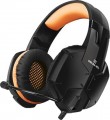Frequency range
The range of audio frequencies that headphones can reproduce.
The wider this range — the more fully the headphones reproduce the spectrum of sound frequencies, the lower the likelihood that too low or too high frequencies will be inaccessible. However, some nuances should be taken into account here. First of all, we recall that the range of perception of the human ear is on average from 16 Hz to 22 kHz, and for the full picture it is enough that the headphones cover this range. However, modern models can noticeably go beyond these limits: in many devices, the lower threshold
does not exceed 15 Hz, or even
10 Hz, and the upper limit can reach
25 kHz,
30 kHz, and even
more. Such extensive ranges in themselves do not provide practical advantages, but they usually indicate a high class of headphones, and sometimes they are only given for promotional purposes.
The second important point is that an extensive frequency range in itself is not a guarantee of good sound: the sound quality also depends on a number of parameters, primarily the frequency response of the headphones.
Flexible design
This feature usually means that the microphone is attached to the headphones using a special flexible arm.
The flexible design gives additional possibilities for moving the microphone relative to the user's mouth and makes it easier to choose the optimal position that provides the best sound quality.
Backlight
The presence of its own
illumination in the design of the headphones.
This function does not affect the main functionality, but gives the “ears” an unusual appearance. It will come in handy for those who buy headphones not only as an audio device, but also as a stylish accessory — in particular, gamers-enthusiasts, or music lovers who want to emphasize their hobby.
Weight
The total weight of the headphones; for true wireless models (see "Cable Type"), the weight of each individual earbud is listed.
This parameter is directly related to the design (see above) and some features of the functionality. Thus, the mentioned true wireless devices are very light, their weight
does not exceed 25 g. More traditional in-ears and in-ears can be noticeably heavier,
up to 50g for in-ears and up
to 100g for most in-ears. Overhead models, for the most part, are quite massive: among them there are many models weighing
200 – 250 g,
250 – 300 g and even
more than 300 g. It should be noted that a significant weight for false ears is often not a disadvantage, but an advantage: it allows them to stay on the head more securely, creates an impression of solidity and reliability, and most often does not create significant inconvenience.

